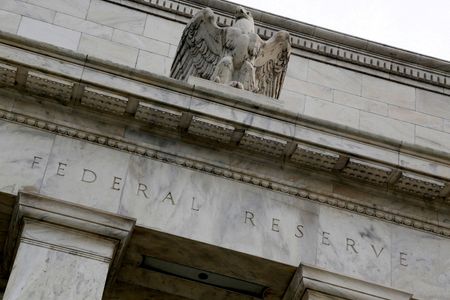By Jamie McGeever
(Reuters) – A look at the day ahead in Asian markets from Jamie McGeever.
With U.S. inflation looking increasingly likely to have peaked, debate is raging on how the Federal Reserve pivot will play out – when and how policymakers slow the pace of rate hikes, transition to a pause, then finally begin easing.
The nature and nuance of that debate was highlighted in the past 48 hours by Fed heavyweights Governor Christopher Waller and Vice Chair Lael Brainard.
Both covered similar ground but Waller struck a more hawkish tone. Wall Street closed in the red on Monday – not surprising given the extent of the rally Thursday and Friday – but investors are likely to gravitate towards Brainard.
Waller on Sunday reminded markets that October’s inflation report was “only one data point” and that the Fed’s final destination is “a ways off.” This was effectively a warning to investors not to get too carried away, as they had done on Thursday and Friday.
Graphic: U.S. interest rates & S&P 500 https://fingfx.thomsonreuters.com/gfx/mkt/gkplwmrbmvb/FFSNP500.jpg
Waller’s caution helped push Wall Street lower at the open on Monday. Then Brainard spoke. While she trod fairly similar ground, she said “it will probably be appropriate soon to move to a slower pace of increases.”
For whatever reason – Brainard’s perceived seniority and influence at the Fed, investor positioning, a market just not wanting to go down, all of the above or something else – the snap back was instant, and the S&P 500 rose almost 1%.
Granted, it subsequently fell again, but investors are right to bet that the Fed’s pivot may be relatively short and sweet. Apart from the June 2006-September 2007 hiatus every cycle peak in the past 50 years has been followed with rate cuts within eight months, most of them within only a few months.
Graphic: S&P 500 bear market rallies https://fingfx.thomsonreuters.com/gfx/mkt/zdvxdooyjvx/BMR.jpg
Will this time be different? Futures markets think not: they are currently pricing in 50 bps of easing between June and December next year.
Asian markets, meanwhile, have a range of potential local steers on Tuesday in the shape of key regional economic data including third-quarter Japanese Gross Domestic Product, and Chinese retail sales, industrial output, unemployment, and investment for October.
Japan’s output is expected to slow sharply from the April-June period, while on balance China’s numbers are expected to weaken from September.
Three key developments that could provide more direction to markets on Tuesday:
Japan GDP (Q3)
China retail sales, unemployment, investment, industrial output (October)
Fed’s Harker, Cook, Barr speak
(Reporting by Jamie McGeever in Orlando, Fla.; Editing by Richard Chang)

